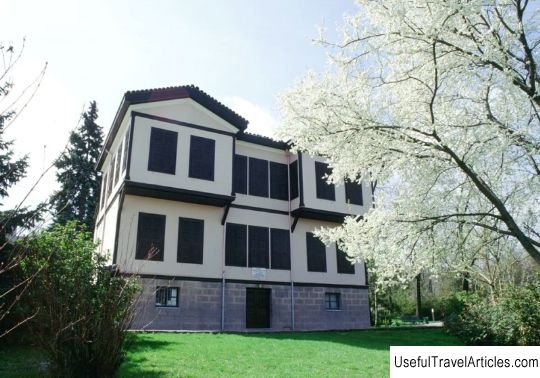Ataturks museum description and photos - Turkey: Ankara
Rating: 8,7/10 (3555 votes) 
Ataturks museum description and photos - Turkey: Ankara. Detailed information about the attraction. Description, photographs and a map showing the nearest significant objects. The name in English is Ataturks museum. Photo and descriptionThe Ataturk Museum is located on Halaskargazi Avenue in Shishli district. It was named after `` Ataturk '', which means `` father of the Turks ''. Thus, Mustafu Kemal awarded the Turkish people for the huge contribution they made to the formation of the national identity of the Turkish nation. A beautiful three-story building served as the residence of Ataturk. Mustafa Kemal, after returning from the Syrian front, rented a house in Shishli, where he once lived, together with his sister Mukbule and mother Zubeida Khanym. Mother and sister drove to the top floor, Mustafa Kemal himself settled on the middle floor, and his adjutant was housed on the first floor of the house. This house was built during the occupation of Istanbul (1908), after the First World War and witnessed numerous meetings and gatherings of Mustafa Kemal and his associates. Previously, this house was bought by the Istanbul Municipality from Tahsin Uzer and converted into a storage place for paintings by prominent artists of that time and many other materials that have spiritual and historical value. The building is a striking example of neoclassical buildings. It consists of three floors and a basement. The museum is rectangular and has a covered gallery on the rear facade. The entire courtyard of the complex covers an area of about 852 meters. On the basement floor, the floor is completely covered with marble slabs, on which the Ushak carpet lies. The carpet is embroidered with sawtooth patterns in white, black, coffee, beige, green, gray and red. It is trimmed with a twisted fringe. The lobby has windows overlooking the garden and the street. They are hung with cambric curtains with curtains painted with yellow leaves and blue flowers on a red background. The curtains are trimmed with fringe fringes at the top and sides. There are also statues, a large mirror and a bust of Ataturk. On the left side of the bust is a writing table covered with a blue tablecloth, on which is a notebook for recording visitors' comments and wishes. Left and right are rooms with fireplaces dating back to the 19th century. A staircase leads to the second floor, on the top of which there are two figurines of knights made of bronze. There is a two-piece wardrobe near the wall. It is decorated with openwork patterns and has two doors and three drawers. In color, the wardrobe matches the ceiling and floor of the lobby. There is also a portrait of Ataturk on the wall. His personal belongings are also on the second floor. There is also a meeting room, a living room, an office, a bedroom, a hairdresser, a waiting room, a library, a dining room and other utility rooms. In the meeting room, there is a low round table made in an old style with a spread on it with a green tablecloth. There are twelve chairs around the table, and ten low chairs (reminiscent of ottomans) are placed along the walls, their backs are decorated with images and scenes from the works of Sakaspere. A gas lamp with an old-style white lampshade hangs in the center of the ceiling. There is a mahogany table in the office, on which lie the writing instruments used by Ataturk himself. The windows are hung with cambric curtains with lace embroidery at the ends and satin curtains in red with beige bows in the form of flowers. The bedspread on the ottoman and pillowcases are made of fabric of the same color, over which a cambric cloak with embroidery and lace edges is thrown over it. The room where Ataturk's personal documents and papers are displayed looks like this: the floor of the room is not covered with anything so as not to distract the attention of visitors from the exhibits. There are also modest cambric curtains on the windows. This room has bookcases and display cases, and photographs are hung on the walls. Ataturk's personal belongings are displayed in display cases in the following order: first display case: a cap, a sports shirt and a gray suit; second showcase: white and black vests, top hat, gloves and tailcoat; the third showcase: shoes and a light demi-season coat in black; the fourth showcase: a comforter, a marshal's cap, a box for storing business cards, a tie, an ashtray, a table bell, two rosary beads, a cane, a whip and a coffee bowl. Other rooms are decorated with statues, vases and paintings. After the death of Ataturk, his villa was transferred to a private government and in 1939 it became an evening craft school for girls and an institute for girls. In 1952, the villa was taken over by the Ministry of Agriculture and until 1980 served as the office of one of its directorates. Finally, the Ministry of Culture became the owner of the mansion, which restored the building and made it a home-museum.      We also recommend reading Museum of Contemporary Art (Museo de Arte Contemporaneo de Barcelona) description and photos - Spain: Barcelona Topic: Ataturks museum description and photos - Turkey: Ankara. |




